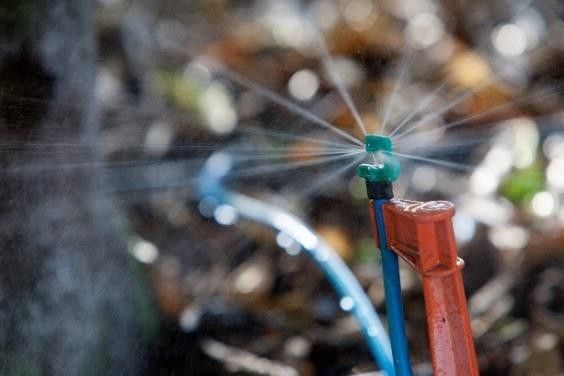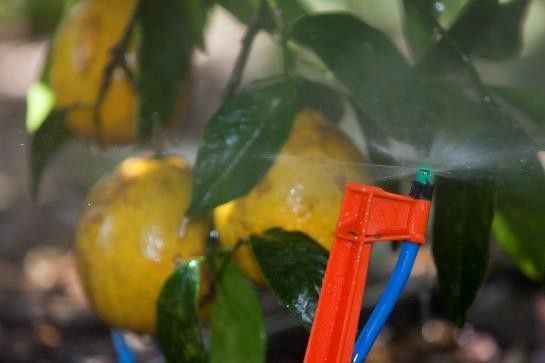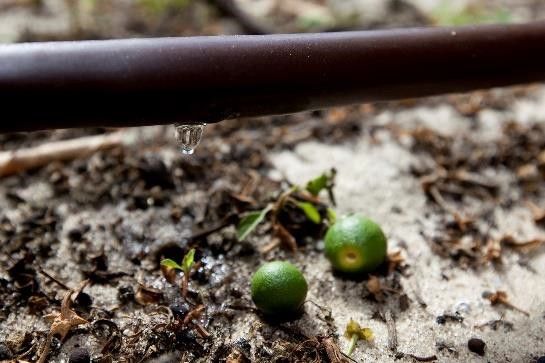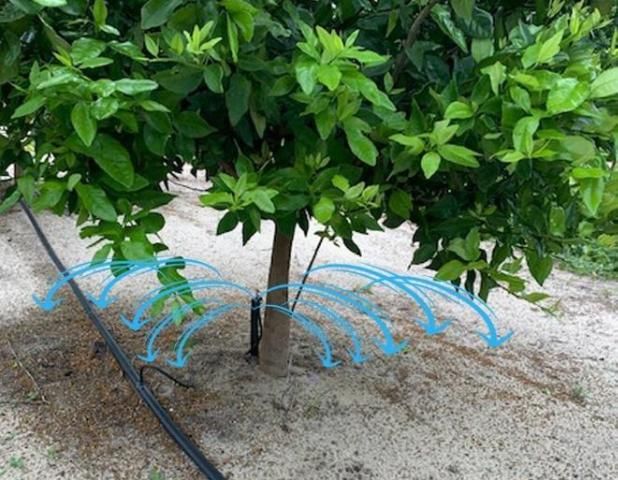Nutrition and HLB-Affected Tree Facts
-
It is highly unlikely once a tree becomes Candidatus Liberibacter (CLas) positive that it can become free of CLas.
-
Good nutrition and irrigation programs can improve the productivity of HLB- affected trees and improve tree health, potentially making citrus production profitable under HLB-prevalent conditions.
-
When considering rejuvenating HLB-affected trees with intensive nutrition and irrigation programs, tree age and disease severity should be considered.
-
No one fertilizer program can be suitable for all groves.
Why Different Management Programs
-
Each grove is unique due to a number of factors alone or in combination, such as:
-
Soil type
-
Soil pH
-
Location
-
Irrigation water quality
-
Organic matter in soil
-
Method of fertilization
-
Irrigation scheduling
-
Tree nutrient status
-
Tree age
-
Variety and vigor
-
Nutrition and irrigation programs should be customized to address these unique situations.

Credit: T. Jones, UF/IFAS
Goal
-
To improve production of HLB-affected trees, nutrition, irrigation, and soil pH should be considered together, because each can influence the efficacy of the others in overcoming the effects of HLB on tree performance.

Credit: T. Vashisth, UF/IFAS CREC
Irrigation Program
-
HLB-affected trees have a compromised, debilitated root system; therefore, their water uptake potential is limited.
-
The canopy of HLB-affected trees is often small; therefore, the water requirement is less than that of a full-canopy healthy tree.
-
Increase frequency of irrigation applications and decrease duration.
-
Because a small root system can only take up a small amount of water at a time, excess water is likely to leach out of the root zone.
-
Frequent irrigation scheduling helps ensure that the tree is not undergoing any water deficit/drought stress.


Soil and Irrigation Water pH
-
Soil pH determines the solubility and bioavailability of nutrients essential for citrus growth and yield.
-
Low soil pH exacerbates nutrient leaching problems.
-
High soil pH makes micronutrients unavailable.
-
For optimal performance, keep soil pH in the 5.8–6.5 range.
-
Management of soil pH and nutrients should include annual soil and water quality testing.
-
Irrigation water acidification, elemental sulfur application, or use of acidifying fertilizers are recommended to reduce soil pH into the acceptable range.
-
Too low or too high soil pH can cause additional stress on the root systems.
-
Frequent soil pH testing should be an indispensable component of irrigation and nutrition management.
Nutrition Program
-
The goal of a nutrition program should be continuous availability of all nutrients to the tree year-round.
-
HLB-affected trees have a small root system, resulting in limited water and nutrient uptake; therefore, making nutrients continuously available to the tree is beneficial.
-
A nutrition program should be a combination of soil- and foliar-applied nutrients. However, do not rely solely on foliar application for any nutrient.
-
Soil-applied nutrients are taken up by the plant with the water uptake; therefore, irrigation scheduling is important.
-
The placement of fertilizer (right place) is critical; it should be placed in the wetted zone as the uptake of nutrients occurs in solution.
-
Frequent leaf nutrient analysis is essential for an effective nutrition program because it helps growers assess if the fertilizer program is meeting tree requirements.
-
The focus of the nutrition program should be on leaf nutrient concentrations and not on the rate of nutrient applied.
-
Fertilizer programs should have all nutrients in the right balance.
-
Optimal soil pH is critical for making nutrients available to the tree; the soil pH needs to be in the right range at the time of nutrient application.
-
If soil pH adjustments are made periodically, the fertilizer application should be coordinated to occur after the pH adjustment.
